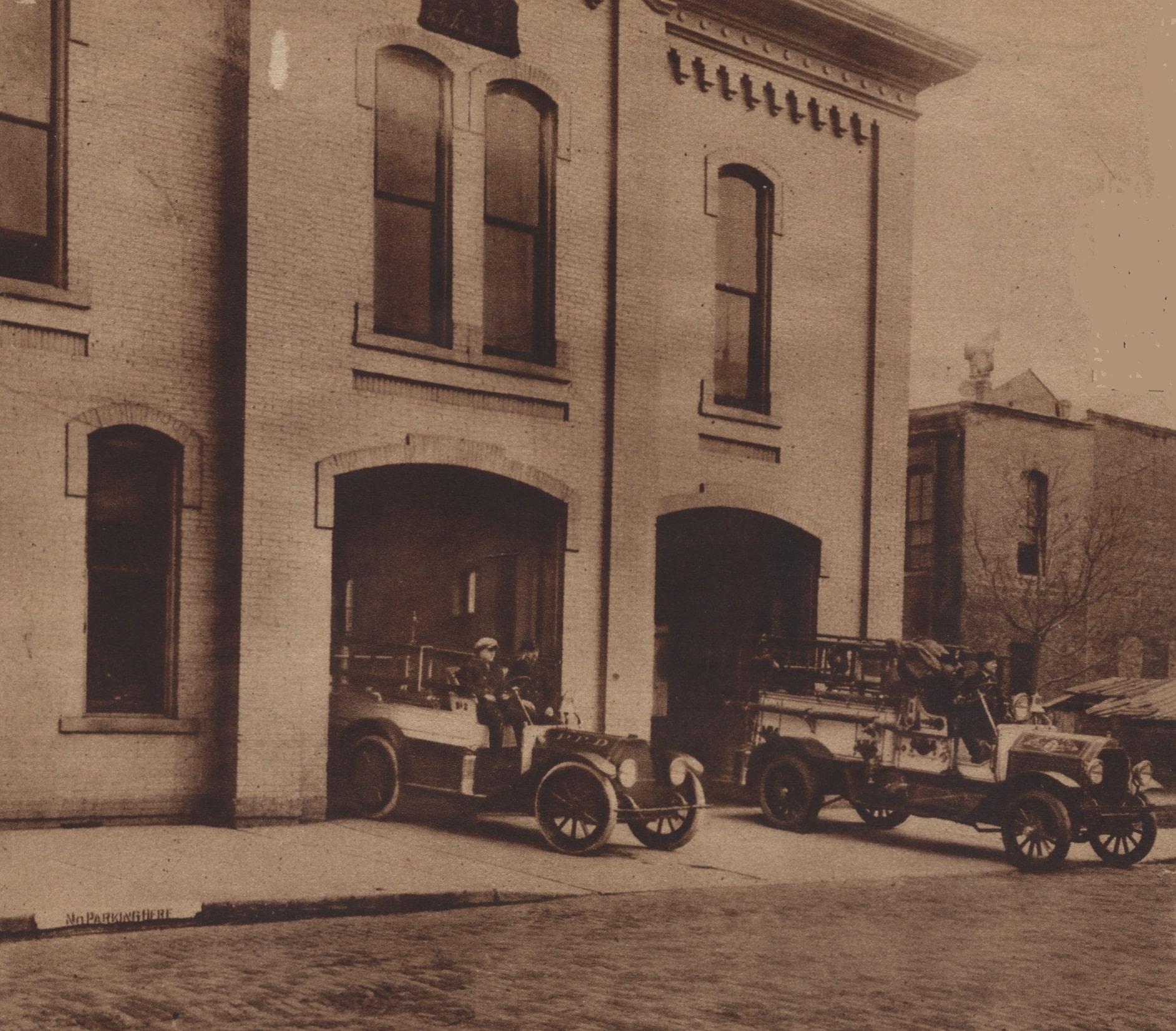This is a revised version of a “From the Local History Room” column that first appeared in Sept. 2011 before the launch of this weblog, under the title “Pekin Fire Department has a blazing history,” republished here as a part of our Illinois Bicentennial Series on early Illinois history.
A further look at Pekin’s old fire companies
By Linda Mace and Jared Olar
Library assistants
The Pekin Public Library’s Illinois Bicentennial video series continues next Friday, Nov. 2, with the showing of a video with a topic perhaps fitting for the season of Hallowe’en and All Souls Day: on-the-scene footage of the archaeological excavation of the former Tharp Pioneer Cemetery that used to be located at the site of the Pekin Schnucks grocery store.
In the 1980s the old Douglas School building was torn down and replaced by K’s Super Saver (now Schnucks), and during construction human remains were discovered that had been overlooked when the former cemetery was closed and its burials transferred to Lakeside Cemetery. The video is about 70 minutes in length, and will be shown at 11 a.m. in the library’s Community Room.
Earlier this month we recalled the Great Fire of 1860 which sparked the formation of Pekin’s original volunteer fire companies. This week we will take a further look at the early days of Pekin’s fire companies and municipal fire department.


As we saw previously, in the aftermath of the Great Fire, three independent fire companies were formed: the Independent Hood and Ladder Company No. 1, Rescue Company No. 1, and Defiance Hose Company.
In 1880 two more volunteer companies were organized: the “Wide Awake” and “Protection.” By 1894 the “Wide Awakes” had a partially paid department. Fire stations were built and torn down as they became obsolete. Equipment was purchased and modernized.

In those days fire-fighting machinery was brought to the fires on horse-drawn wagons. But with the advent of the automobile toward the end of the 19th century, before long the days of horse-drawn fire wagons were at an end. By the early 1920s Pekin’s fire department had converted to automotive ladder trucks and pumper trucks.
But how did the public get word to Pekin’s early fire companies that they were needed to put out a fire?
The answer is found in “Pekin: A Pictorial History,” which says that by 1884 “the city had installed a Gamewell Street Box Fire Alarm system. This system allowed the public to communicate alarms directly to the fire department from pull boxes located throughout the community.”
And just how would one operate these? The 1903-1904 City Directory listed the instructions, as follows:
“FIRE ALARM STATIONS, PEKIN, ILLINOIS. TO KEY HOLDERS: RULE ONE. Upon positive information of a FIRE near your signal station. BREAK THE GLASS, UNLOCK THE DOOR AND PULL THE HOOK DOWN, THEN LET GO. RULE TWO. Should you hear the small bell ringing inside (which is an indication that an alarm is being sent over the lines), wait until small bell stops ringing: then close outer door, which puts box in circuit. Now open door and pull hook down once and alarm will be sent in. * THIS RULE IS IMPORTANT AND SHOULD BE OBSERVED. * RULE THREE. DO NOT PULL THE HOOK DOWN MORE THAN ONCE. RULE FOUR. Never leave the Station from which you give the alarm until the Fire Department arrives, and then tell them where the fire may be, unless the fire will show itself. RULE FIVE. In using a TELEPHONE FIRE ALARM STATION CALL up the TELEPHONE OFFICE. When they answer, you repeat slowly and distinctly: “FIRE! FIRE! Station No.–, giving the number of the station you are at.”
Our modern “9-1-1” emergency system is obviously much faster and more efficient.













